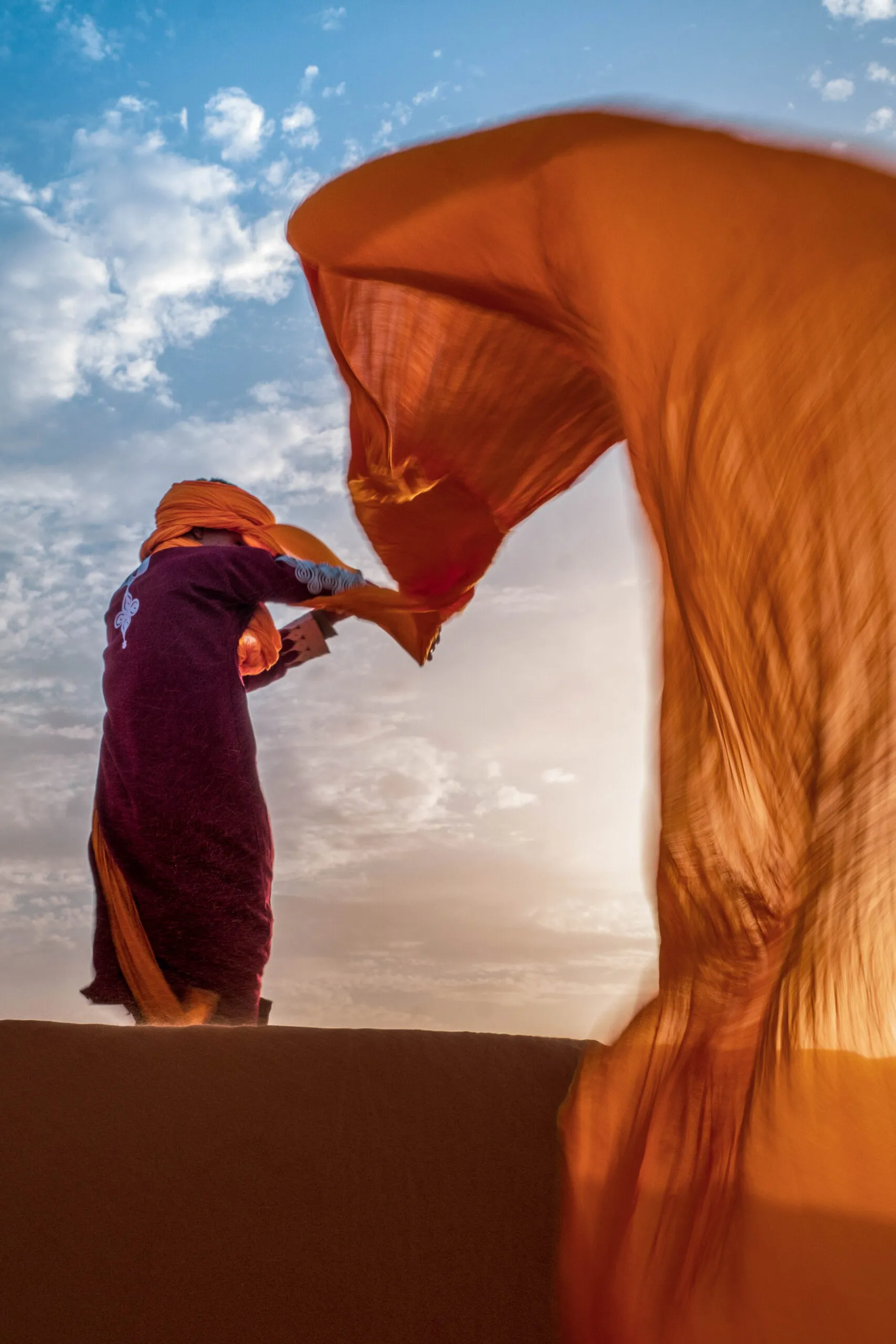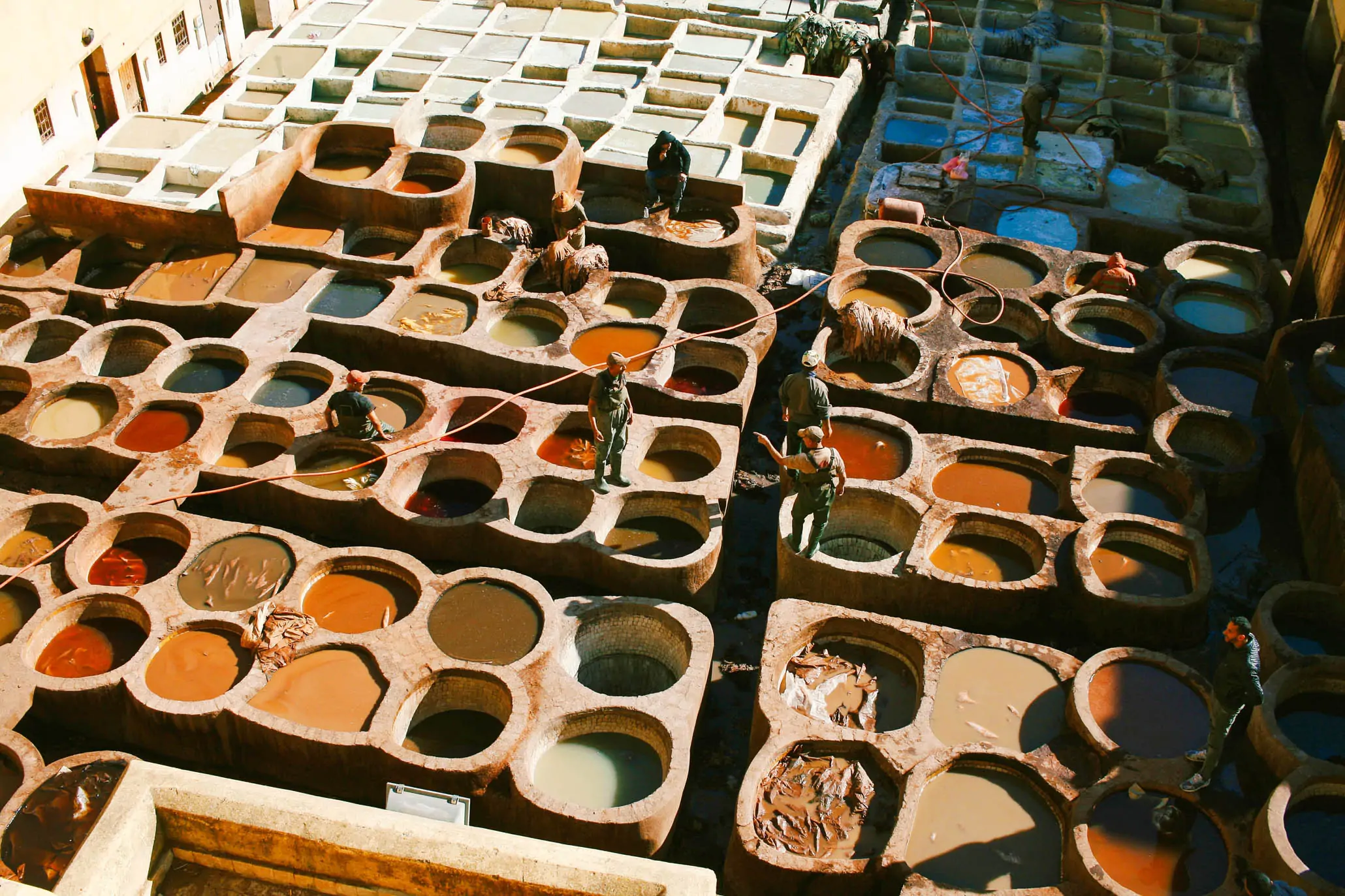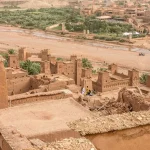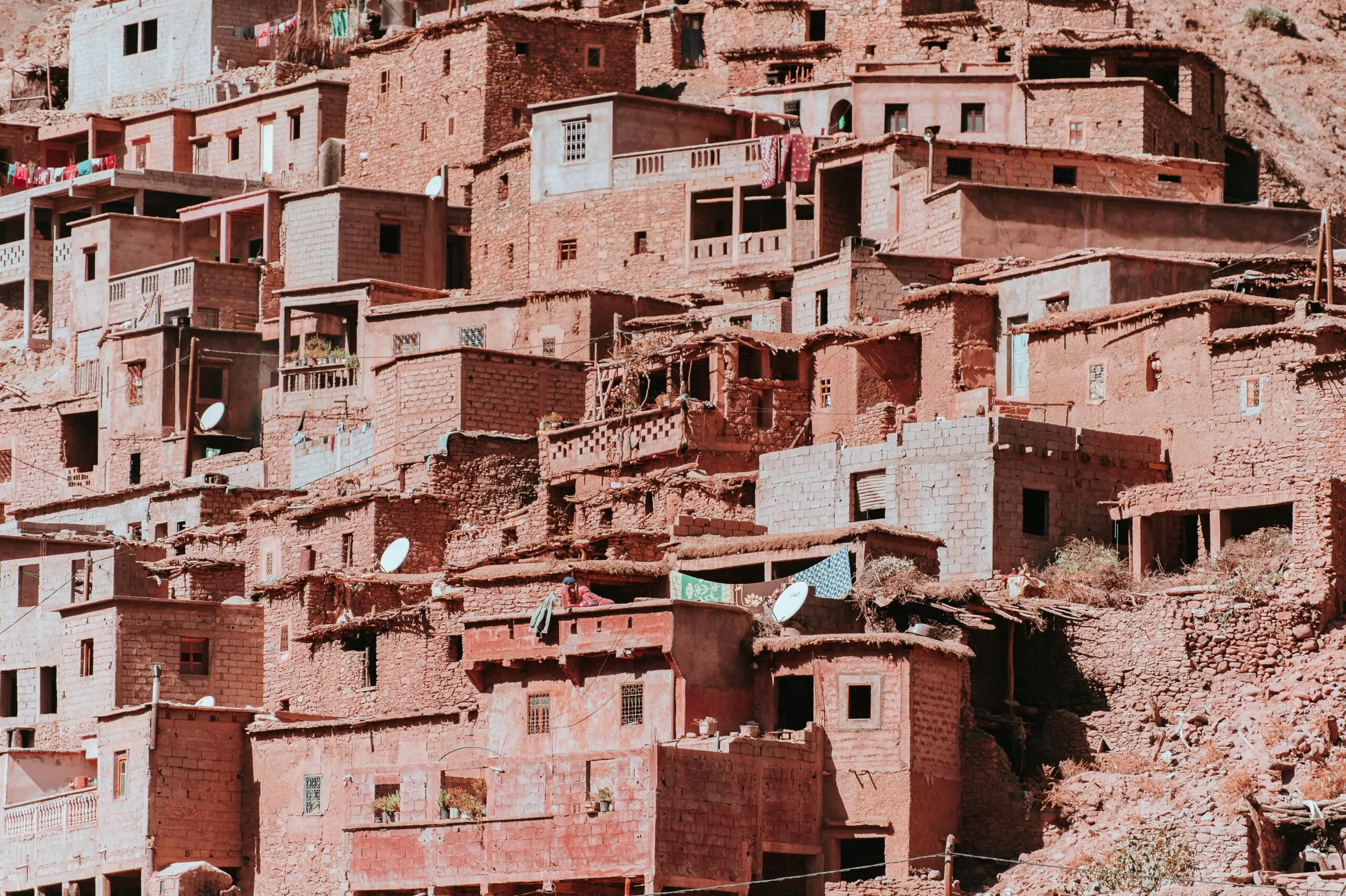
Introduction to Fes Medina
Fes Tours, one of Morocco’s most iconic cities, holds a significant place in the annals of history and culture, with its medina being a prime example. Recognised by UNESCO as a World Heritage site, Fes Medina is a living testament to the city’s rich past. This ancient medina, dating back to the 9th century, is a labyrinth of narrow alleyways, bustling souks, and architectural marvels that continue to captivate visitors from around the world.
The UNESCO recognition of Fes Medina is a nod to its exceptional value and the need for its preservation. It is a place where time seems to stand still, offering a glimpse into the lives of those who walked these streets centuries ago. The medina’s intricate design and well-preserved structures, from the grandiose Al Quaraouiyine Mosque and University to the opulent madrasas and palaces, highlight the architectural prowess and cultural depth of the region.
What makes Fes Medina a must-visit destination is not only its historical and cultural significance but also its vibrant present. The medina is a living, breathing entity, where the past and present coexist harmoniously. Visitors can experience the traditional Moroccan lifestyle amidst the modern hustle and bustle, with artisans crafting intricate wares, merchants selling a myriad of goods, and the scent of Moroccan spices wafting through the air.
For history enthusiasts and avid travellers, Fes Medina offers a unique opportunity to step back in time. Each corner of the medina tells a story, making it a treasure trove of experiences waiting to be discovered. Whether you wander through its historic lanes, admire its stunning architecture, or immerse yourself in its vibrant culture, Fes Medina promises an unforgettable journey through time.
The Historical Significance of Fes
Fes, one of Morocco’s most historic cities, was founded in the late 8th century by Idris I, who established it as a burgeoning centre for culture and learning. Over the centuries, Fes has been a pivotal location in the development of Moroccan and Islamic history, serving as a focal point for scholars, artisans, and traders. By the 9th century, under the rule of Idris II, the city expanded significantly, attracting people from various regions, including Andalusia and the Maghreb.
One of the key historical milestones in Fes’ development was the establishment of the University of Al Quaraouiyine in 859 AD. This institution is recognised as the oldest continuously operating degree-granting university in the world. It became a major intellectual hub, drawing scholars from across the Islamic world to study subjects ranging from theology to science. The university’s library, renowned for its extensive collection of manuscripts, further solidified Fes’ reputation as a centre of learning.
Throughout the medieval period, Fes flourished under various dynasties, including the Almoravids, Almohads, and Merenids. Each dynasty made significant contributions to the city’s architectural and cultural heritage. The Merenids, for example, were responsible for constructing many of the city’s iconic madrasas, such as the Bou Inania and Attarine madrasas, which are renowned for their exquisite tilework and intricate carvings.
Fes also played a crucial role in the medieval Islamic world’s trade networks, connecting the Sahara with the Mediterranean. The city’s strategic location has made it a melting pot of diverse cultures and ideas, which is reflected in its rich architectural styles and vibrant cultural life. By the 14th century, Fes had become the capital of Morocco, a status it held intermittently until the early 20th century.
In the broader context of Moroccan and Islamic history, Fes stands out not only for its contributions to education and trade but also for its resilience and ability to adapt through various political and social changes. The city’s rich historical tapestry continues to attract scholars, historians, and tourists, making it a living museum of Morocco’s illustrious past.
Architectural Marvels in Fes Medina
Fes Medina, a UNESCO World Heritage site, stands as a testament to Morocco’s rich artistic and architectural heritage. Its labyrinthine alleys and bustling souks are adorned with some of the most magnificent examples of Islamic architecture. The intricate mosaics, grand medersas, and ancient palaces encapsulate the essence of a bygone era.
One of the most notable structures in Fes Medina is the Bou Inania Madrasa. Built in the 14th century by the Marinid Sultan Abu Inan Faris, this Islamic school is celebrated for its exquisite craftsmanship. The madrasa’s walls are adorned with vibrant zellij tiles, stucco carvings, and carved wood, showcasing the exceptional talent of Moroccan artisans. The central courtyard, with its marble fountain, adds to the serene ambience, making it a pivotal example of Marinid architecture.
Equally impressive is the Al-Attarine Madrasa, constructed during the reign of Sultan Uthman II Abu Said in the early 14th century. This medersa is renowned for its harmonious blend of intricate tilework, cedar wood carvings, and arabesque patterns. Its design reflects the zenith of Marinid architectural elegance. The central courtyard, flanked by beautifully decorated arcades, serves as a tranquil retreat within the bustling medina.
Another gem of Fes Medina is the University of Al Quaraouiyine. Founded in 859 AD by Fatima al-Fihri, it is recognised by UNESCO and the Guinness World Records as the oldest continuously operating degree-granting university in the world. The university’s architecture is a splendid blend of Islamic, Andalusian, and Moroccan influences. Its intricate geometrical patterns, calligraphy, and ornate arches stand as a testament to the scholarly and cultural significance of Fes.
These architectural marvels, with their intricate designs and historical significance, offer a vivid glimpse into the artistic and intellectual zenith of Fes Medina. The harmonious blend of form and function in these structures not only reflects the city’s rich heritage but also continues to inspire awe and admiration among visitors and scholars alike.
Navigating the Maze-like Streets
Exploring the historic Fes Medina can be both an enchanting and bewildering experience due to its intricate network of narrow streets and alleys. The medina, a UNESCO World Heritage site, is renowned for its labyrinthine layout, which has remained largely unchanged for centuries. Understanding the structure of Fes Medina is crucial for a successful visit. The medina is organised into a series of interconnected streets and cul-de-sacs, where every turn can lead to a new discovery or a dead end.
One of the most effective ways to navigate the complex streets of Fes Medina is to identify and remember key landmarks. Notable sites such as the Bou Inania Madrasa, the Al-Attarine Madrasa, and the Zawiya of Moulay Idriss II serve as excellent reference points. Additionally, the main thoroughfares, Talaa Kebira and Talaa Seghira, can guide you through some of the busiest and most vibrant parts of the medina. These landmarks not only help you stay oriented but also enrich your understanding of the cultural and historical tapestry of Fez tours.
Wandering through the medina’s narrow alleys offers a sensory overload, with the sounds of bustling markets, the scents of exotic spices, and the vivid colors of handcrafted goods around every corner. To fully immerse yourself in this vibrant environment, it is advisable to take your time and explore at a leisurely pace. Don’t hesitate to venture off the beaten path, as some of the most remarkable experiences can be found in the less frequented areas of the medina.
For those concerned about getting lost, hiring a local guide or using a reliable map can provide peace of mind. Many local guides offer in-depth knowledge of the medina’s history and can lead you to hidden gems that might otherwise be overlooked. Alternatively, mobile apps with offline maps can be invaluable tools, ensuring you can navigate the labyrinthine streets even without an internet connection.
In essence, navigating the Fez Tours Medina is an adventure in itself. By leveraging landmarks, embracing the vibrant atmosphere, and utilising available resources, you can confidently explore this historic marvel.
Discovering Hidden Treasures in the Souks
The souks of Fez Tours Medina are a labyrinthine network of vibrant markets that offer a sensory overload of sights, sounds, and smells. These bustling bazaars are a treasure trove for visitors seeking an authentic Moroccan experience, with a plethora of goods ranging from traditional crafts to exotic spices. The souks are divided into sections, each specialising in different wares. For instance, the Souk el Henna is known for its beauty products and traditional henna, while the Souk el Attarine specialises in spices and perfumes. The Souk el Henna is particularly renowned for its distinctive argan oil products, which are widely sought after for their cosmetic benefits.
As you wander through the narrow alleyways, you’ll encounter artisans at work, crafting everything from intricate metalwork to handwoven textiles. One of the most remarkable finds in Fes is the zellige, a traditional Moroccan mosaic tile, meticulously crafted by skilled artisans. Another highlight is the leather goods, especially those from the Chouara Tannery, where traditional leather tanning techniques are still practised. The vibrant colours and distinctive smells of the tannery are an experience in themselves.
Shopping in the souks is an art that involves more than just selecting items; it includes the engaging practice of haggling. Bargaining is expected and can be a delightful interaction if approached with respect and good humour. Start by offering about half of the initial price and be prepared for a friendly negotiation. Remember, the key is to enjoy the experience rather than to drive the hardest bargain.
To shop like a local, it is advisable to venture into the souks early in the morning when they are less crowded and the vendors are more willing to negotiate. Keep an eye out for items that are unique to Fes, such as the handwoven djellabas, traditional Moroccan attire, and the delicate filigree jewellery that is a speciality of the region. By exploring the souks of Fes Medina, you are not only purchasing souvenirs but also taking home a piece of Moroccan heritage.
Cultural Experiences in Fes
Fes, a city renowned for its rich heritage and vibrant culture, offers an array of cultural experiences that provide a deep dive into its historical and contemporary essence. One of the most captivating aspects of Fes is its rich tradition of music and dance performances. Visitors can frequently enjoy mesmerising Andalusian music, characterised by its intricate rhythms and poetic lyrics, in various venues throughout the city. Additionally, the spiritual and soulful melodies of Sufi music are often showcased in intimate settings, offering a profound glimpse into the spiritual life of the residents.
Culinary delights in Fes present another avenue for cultural immersion. The city’s bustling markets and traditional eateries serve an array of Moroccan delicacies, from savoury tagines and couscous to sweet pastries like pastilla. Participating in a cooking class can enhance this experience, allowing visitors to learn the art of Moroccan cooking and understand the significance of the various spices and ingredients used in the local cuisine.
Local festivals play a crucial role in the cultural fabric of Fes. The annual Fes Festival of World Sacred Music is a notable event that attracts artists and audiences from around the globe, celebrating the diversity and unity of sacred music traditions. Another significant festival is the Moussem of Moulay Idriss II, which honours the founder of Fes with a series of religious and cultural activities. These festivals not only entertain but also provide insight into the local traditions and communal values.
Traditional ceremonies, such as weddings and religious celebrations, provide visitors with a unique opportunity to witness customs and rituals that have been preserved for centuries. These events are often characterised by elaborate preparations, traditional attire, and a sense of communal participation that reflects the tight-knit nature of Fes society.
For those seeking to immerse themselves in the local culture fully, several recommendations stand out. A visit to a traditional hammam (bathhouse) provides a relaxing yet culturally enriching experience. Exploring the artisanal workshops, where craftsmen practice centuries-old trades such as leather tanning and pottery making, offers a hands-on understanding of the city’s artisanal heritage. Lastly, engaging with local storytellers and poets can provide an enriching narrative of Fes’ history and folklore, making the cultural journey through Fes both educational and memorable.
Historical Landmarks and Must-See Sites
Fes Medina, a UNESCO World Heritage site, is a treasure trove of historical landmarks that offer a glimpse into Morocco’s rich past. One of the most significant sites within the medina is the Zaouia of Moulay Idriss II. This sanctuary is dedicated to Moulay Idriss II, the founder of Fes, and is a revered pilgrimage site. The zaouia is not only a spiritual center but also an architectural marvel, showcasing intricate tile work, ornate carvings, and a serene courtyard. It stands as a testament to the profound historical and cultural heritage of Fes.
Another must-see landmark is the Dar Batha Museum. Housed in a stunning 19th-century palace, the museum offers an extensive collection of traditional Moroccan arts and crafts. Visitors can marvel at exquisite ceramics, textiles, woodwork, and metalwork, each piece telling a story of the region’s artisanal mastery. The museum’s Andalusian-style garden is also a tranquil retreat, providing a peaceful contrast to the bustling medina streets.
The Nejjarine Museum of Wooden Arts & Crafts is an essential stop for those interested in woodworking and Moroccan craftsmanship. Located in a beautifully restored funduq (caravanserai), the museum showcases an impressive array of wooden artefacts, including furniture, tools, and musical instruments. The Nejjarine Museum not only highlights the skill and creativity of Moroccan artisans but also preserves the traditional techniques that have been passed down through generations.
These landmarks, among others, encapsulate the essence of Fez Medina. They offer invaluable insights into the city’s history, culture, and artistic heritage, making them indispensable stops for any visitor eager to step back in time and explore the story of Fes.
Practical Tips for Visiting Fes Medina
Planning a visit to Fes Medina requires careful consideration to ensure a smooth and enjoyable experience. To start with, the best times to visit Fes are during the spring (March to May) and fall (September to November) when the weather is mild and comfortable. Summers can be extremely hot, while winters are cooler but still pleasant. Dressing appropriately is crucial; modest clothing that covers shoulders and knees is recommended to respect local customs. Women may find it helpful to carry a scarf to cover their heads when visiting religious sites.
Safety is paramount when navigating the winding alleys of Fes Medina. Although the area is generally safe, it is advisable to remain vigilant, especially in crowded places. Keep your belongings secure and be cautious of pickpockets. Hiring a local guide can enhance your experience by providing insights into the rich history and culture of the Medina, and also ensure you don’t get lost in its labyrinthine streets.
Respecting local customs and traditions is essential. Greet locals with a friendly “Salam Alaikum” and always ask for permission before taking photographs of people. During the holy month of Ramadan, be mindful of eating and drinking in public, as many locals will be fasting from dawn until sunset. Additionally, tipping is appreciated for services rendered, so keep some small change handy.
When it comes to accommodations, options range from luxurious riads to budget-friendly hostels. Staying in a traditional riad offers an authentic experience, often with beautifully decorated rooms and personalised service. For transportation, taxis and buses are available, but walking is the best way to explore the Medina’s intricate alleys. If you prefer a more guided approach, consider joining a group tour.
Finally, no visit to Fes Medina is complete without indulging in local cuisine. Street vendors and small eateries offer delicious Moroccan dishes like tagine, couscous, and pastilla. For a more refined dining experience, visit a traditional Moroccan restaurant where you can savor the rich flavors and aromatic spices that define Fes’s culinary heritage.








